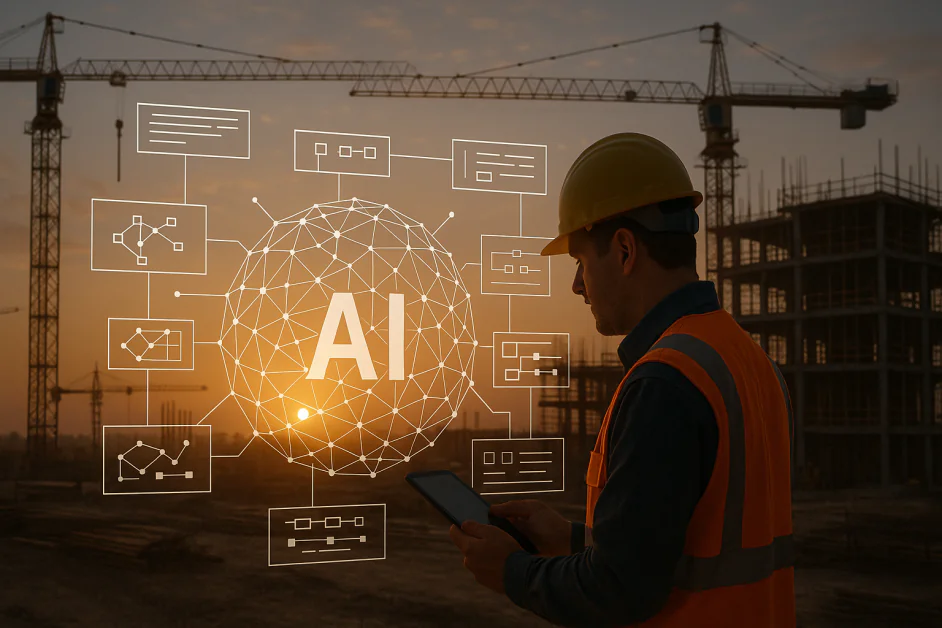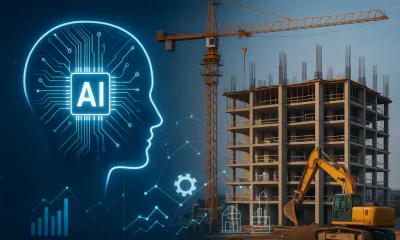Thought Leaders
Construction Builds a Future with the Help of AI

Today’s jobsites create terabytes of data – much of which comes from live imagery and video that nearly every site uses in some capacity.
Cameras on construction sites are critical for safety, security, and progress monitoring – with jobsites using anywhere from one or two cameras to a full fleet. They can be used to monitor perimeters, update job status, or document important happenings, capturing data every second of the day.
Unfortunately, this visual data isn’t being used to its full capacity – which is lost opportunity for contractors, supers, project managers, and other members of the construction team. AI powered jobsite intelligence is changing that. The industry has matured to the point where the infrastructure is in place for AI to have a tangible impact in turning “visual data” and “reality capture” into “jobsite intelligence” and actionable insight. Here's how.
AI as extra eyes on the jobsite: Many construction leaders oversee numerous sites miles apart. Having visibility onto each site and knowing where to prioritize time in the day remains difficult. Cameras capture all of this information which is viewable via mobile phone or web browser; however, workers cannot afford to sift through troves of valuable data points all day.
AI gives workers relief by automating the search for critical happenings – and identifying the data points that matter most. The software platforms that store visual data can now leverage trained AI to automatically label and file specific construction activities, from PPE gear to material storage, to vehicle movement. Some platforms can execute hundreds of relevant identifications – with more learned every month. This enables contractors to quickly search for the specific data points that they require to make the most impact – or identify the situations that require immediate attention.
AI as a documentation, validation, and reporting tool: Contractors are trying to close a productivity gap while also facing stricter and more regimented documentation and reporting requirements, taking time away from high-touch tasks. Contractors need a simple way to track progress and upcoming workflows – both of which are key to accurate scheduling and unlocking dollars.
The introduction of AI has made this easier. Setting up search parameters – with alerts – automates information download and quickly puts it in a contractor’s pocket or on their desktop. Jobsite intelligence platforms can automate reporting with accuracy, giving a one-click, sharable recap of key happenings on the jobsite. Dragging and dropping visual data that has been automatically tagged and reported with AI makes validating schedules much simpler. For example, did the concrete pour happen on time, and to quality? A quick search proves it did. Or, is there a builder’s insurance risk claim to file?
There is also the ability to automate validation by integrating a jobsite management solution into a project management platform, in which the visual detection automatically documents and marks projects complete against scheduling. This functionality is game changing as contractors try to limit technology sprawl and use only a few integrated digital touchpoints throughout the day.
AI as a force multiplier to scale: Contractors don’t want “AI” – they want simple, helpful accelerators that support safer, more secure, more successful builds – and a more predictable and productive workday. Early iterations of AI-enabled tools connect contractors to the solutions they already use, such as jobsite cameras, drones, and robotics-enabled machinery, and make the data generated from those solutions more actionable.
With AI, there are opportunities to continue this momentum as technology matures, and data proliferates the jobsite to greater lengths. It means that, with continued integrations, there are other tangible ways that jobsite intelligence, powered by AI, can positively impact the construction industry. For example, the integration of wearables and machine sensors from the jobsite. As AI tools become faster and more reliable, a camera can detect a situation while AI can interpret it and send an alert to a worker’s wearable device that reminds them to wear the proper PPE gear they forgot, for example.
What is next?
Promising use cases – including automated monitoring of material deliveries or scheduling configurations and optimizations based on weather data – lie around the corner. As camera and image capture innovation continues, the amount and quality of visual data will continue to improve. As will the ways that contractors can use them, free of the shackles of trenching or cabling.
So too will AI models improve as they are trained on more industry-specific data. This opens the door to faster tagging, quicker analytics, and robust reporting. Automated prevention is another area gathering momentum. With stronger integrations comes a simpler answer to alerts and other device-to-device communication.
And, at the end of the day, if technology in any way can help mitigate IP loss as older generations leave the workforce – and newer generations of workers or other professions join the industry, then it will have done its job.
As a technologist, I am buoyed by its potential to help an industry that is critical to our nation’s prosperity become safer, more secure, and more successful. People, augmented by AI-enabled tools, are its future.










